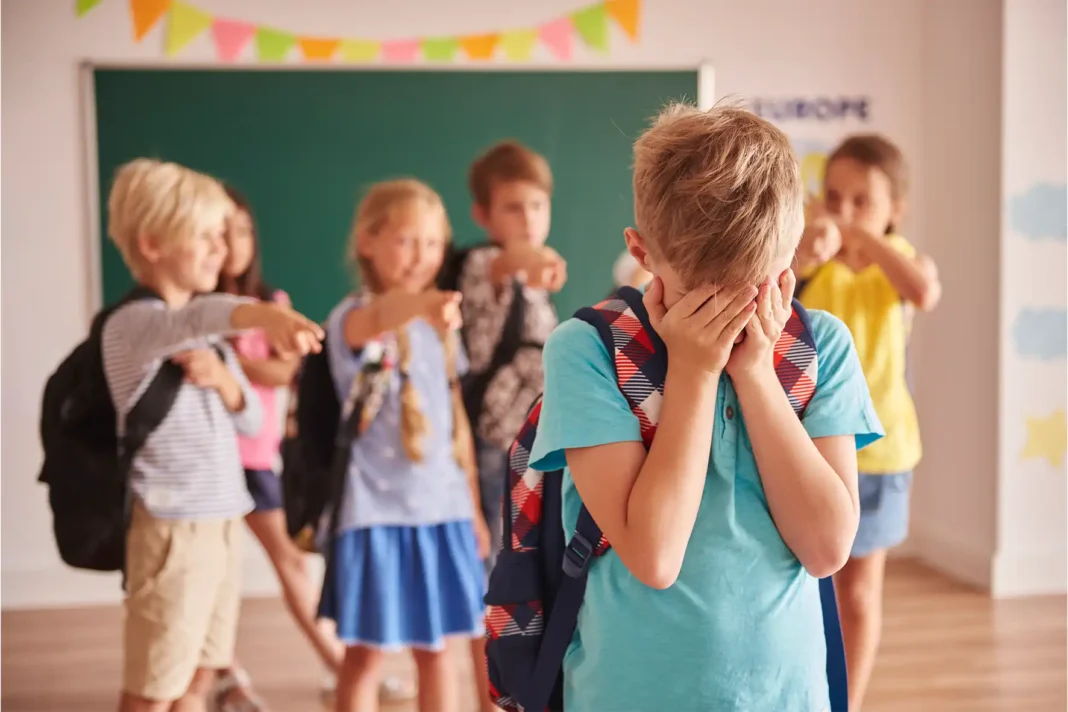Peer bullying is a systematic behavioral pattern frequently seen among children and adolescents, characterized by individuals harming each other through physical, verbal, social, or digital means. This behavior can have short- and long-term negative effects on the victim. Peer bullying affects not only the victim but also the bully and bystanders. Bullying can negatively impact individuals’ psychological and social development, leading to problems such as depression, anxiety, loss of self-confidence, academic failure, and social withdrawal. Therefore, understanding the causes, mechanisms, and effects of peer bullying is critical for developing preventive strategies. This article will examine the causes, mechanisms, and psychological and sociological effects of peer bullying in detail.
Individual Factors
Individual characteristics play an important role in the emergence of bullying behavior. Children with low empathy may have difficulty understanding others’ emotions and may be unable to respond appropriately socially. Lack of self-esteem and low self-confidence can lead individuals to a need to assert power and establish dominance. Children with poor anger management may resort to aggressive behavior when experiencing conflict or frustration. Research shows that emotional factors such as anger, jealousy, and frustration increase bullying behavior (Keskin, 2010).
Family Factors
The family environment is a critical factor in a child’s social and emotional development. Violence, neglect, or excessive discipline can lead to a child modeling aggressive behavior. Lack of communication within the family and lack of emotional support can create social skill deficits and emotional instability in the child. Parents’ conflict resolution strategies or anger management problems can lead children to adopt similar behaviors. Research shows that children with strong family support are less likely to engage in bullying behavior (Akgün, 2005).
School and Social Environment Factors
School is one of the social spaces where bullying behaviors occur most frequently. Teachers’ insensitivity and inadequate discipline policies can increase bullying behavior. Unequal classroom power balances, pressure from popular students, and group norms supporting bullying facilitate the emergence of these behaviors. Competition between students, peer pressure, and social hierarchy all contribute to the visibility of bullying behaviors. Teachers’ awareness and intervention skills directly impact the prevalence of bullying (Aydın, 2019).
Social and Cultural Factors
Social values and cultural norms influence the behavior of children and adolescents. In societies where violence is normalized, bullying behaviors are more common among children. Violent themes in media and digital content facilitate the modeling of aggressive behavior. Gender roles stand out as a factor that encourages aggressive behavior, especially among boys. In this context, bullying should be addressed not only as an individual but also as a societal problem (Kılınç & Uzun, 2020).
Mechanisms of Emergence
Peer bullying emerges from a combination of individual, familial, and social factors. The search for power and control is one of the primary motivations for bullying. During adolescence, the search for identity and the strengthening of a sense of belonging can lead individuals to strive for dominance within a group. The desire for social acceptance and popularity leads individuals to gain status within the group by harming others. Emotional reactions and anger management play a critical role in the emergence of bullying. Group dynamics are a significant factor in the prevalence of bullying behavior; the attitudes of leaders, peer norms, and peer pressure determine whether bullying behaviors are maintained or stopped (Yıldırım & Şimşek, 2016).
Psychological Effects
Peer bullying has a variety of emotional effects on victims. Depression, anxiety, loss of self-confidence, social withdrawal, and academic failure are the most common consequences. When bullied, victims may feel worthless and withdraw from social relationships. Long-term bullying can lead to serious psychological problems such as post-traumatic stress disorder (PTSD). Students who witness bullying also experience anxiety, stress, and insecurity. These emotional effects negatively impact an individual’s social adjustment, academic success, and overall psychological well-being. Individual awareness, social skills training, and psychological support are important to prevent emotional effects (Aydın, 2019).
Social Impacts
Peer bullying impacts not only the individual but also the societal level. Bullying disrupts social relationships within schools, reinforcing intragroup hierarchies and power imbalances. Social isolation and exclusion undermine students’ sense of social belonging. In schools where a bullying culture is prevalent, a lack of trust and communication problems arise among students. Furthermore, bullying behaviors can contribute to the reinforcement of societal norms of violence and deepen social impacts and inequalities. Preventing social impacts is possible through school policies, teacher and student awareness, and improving the social environment (Kılınç & Uzun, 2020).
Conclusion
Peer bullying is a multifaceted problem that arises from the interaction of individual, family, school, and societal factors. Increasing individual awareness, developing emotional intelligence and anger management skills, strengthening family support and communication mechanisms, and making school environments safe and equitable are effective strategies for preventing bullying. Increasing teacher awareness, supporting students’ social skills, and implementing school policies play a critical role in preventing the spread of bullying. Multidimensional approaches should be adopted at the individual and societal levels to reduce emotional effects and social impacts. Understanding and preventing peer bullying is of great importance both individually and socially.
Sources
-
Keskin, S. (2010). Akran zorbalığının nedenleri ve çözüm önerilerine ilişkin okul öncesi öğretmenlerinin görüşleri. Eğitim ve Bilim, 35(158), 90-100.
-
Akgün, B. (2005). Okulda zorbalık. Eğitim ve Bilim, 30(136), 1-8.
-
Yıldırım, A., & Şimşek, H. (2016). Sosyal bilimlerde nitel araştırma yöntemleri. Seçkin Yayıncılık.
-
Aydın, İ. (2019). Akran zorbalığı ve başa çıkma stratejileri. Aydın İnsan ve Toplum Dergisi, 5(2), 117-140.
-
Kılınç, M., & Uzun, K. (2020). Ergenlerin öznel iyi oluşlarının yordayıcıları olarak akran zorbalığı ve akran mağduriyeti. Ahi Evran Üniversitesi Kırşehir Eğitim Fakültesi Dergisi, 21(3), 1400-1439.


